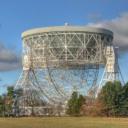Yahoo Answers is shutting down on May 4th, 2021 (Eastern Time) and the Yahoo Answers website is now in read-only mode. There will be no changes to other Yahoo properties or services, or your Yahoo account. You can find more information about the Yahoo Answers shutdown and how to download your data on this help page.
Trending News
Is it possible to have multiple wifi antennas in series?
My wifi signal can be weak at the other side of the house, what if I plugged a co ax cable into the router that was connected to multiple wifi antennas spread out in the loft? Is that possible? it's only a single story building
5 Answers
- ?Lv 44 years ago
A powerline connection does exactly what you want to do, and for a fraction of the cost and headache.
- Laurence ILv 74 years ago
you CAN daisy chain routers together 1-->2 -->3 and so on. each having its own wifi signal.its just that routers 2,3,4 etc have to be a certain type that allows internet passthrough(so thier menu doesnt have any ISP stuff in it , it just refers to the originating IP/Gateway of 1st router.). typically your standard Cable router(that does not have a modem but instead has 5 LAN ports where the 5th one is actually a WAN port that would normally connect via ethernet to a CABLE MODEM). Obviously it would be wise to put each one on its own WiFi channel so no interference occurs. since most people throw their old cable routers out, you can easily find an old one for FREE from a friend. You could also use PowerLine adapters instead which use transmitters that just plug in to wall sockets and the data travels down your mains electricity wires without affecting the supply. the links below arent the best but kind of do the job well enough.
Source(s): http://www.techadvisor.co.uk/test-centre/network-w... https://www.linksys.com/us/support-article?article... - RichardLv 74 years ago
Normally routers with multiple antennae are designed either to use different antennae for bands, or to provide diverse transmission/reception points. In a building, radio signal reflections from walls and metal objects can create all sorts of interference patterns. At the frequencies used for WiFi, the interference can mean the points where there is a strong signal and points with almost no signal can be just a few centimetres apart. The router's antennae positions and the internal circuitry are designed to cope with this so that at least one antenna is always in a good position for a reasonable connection. If you move your device (not the router) just a few centimetres, then the interference pattern can change and a different antenna on the router takes over.
If you try remotely connecting antennae to the router, then the optimum operation of the router's WiFi will be compromised, and variations in propagation over a cable compared with radio waves will distort what the router picks up. Cable propagation is significantly slower than radio propagation so a signal picked up by an antenna on the router will be significantly ahead of signals delivered to the router from a cable connected antenna. This is made worse if you try to connect multiple antennae to the same cable. Unless the antennae are all carefully impedance matched to the cable then signal reflections will run up and down the cable causing extra distortion, and if multiple antennae are handling the same signal the difference in path lengths and cable lengths can cause reflections in the copper in much the same way as walls can cause reflections in radio signals.
You will be better off running Ethernet cables (and power) from the router to Wireless Access Points around the house, making sure that each WAP is at least 4 channels away from the other WAPs (at least the nearest ones). Personally, I would set the WAPs and the router all to use different WiFi network names (SSIDs). If two WiFi sources use the same SSID and both are in range of a device, the device may spontaneously switch from one source to the other one. This is not always from the weaker to the stronger. WiFi is not transmitting continuously, and when a device scans for channels, if the best source happens to be silent at the moment scan looks at that channel, it can be missed and a weaker source might be selected. Whenever a jump to a different source takes place, then the network has to learn about the new configuration before full performance returns.
So to answer the specific question, the answer is NO.
I hope this helps.
- AdrianLv 74 years ago
If the router has multiple antenna ports, you can "move" any one antenna to a different location with good quality coax cable. The cable should be 50 ohm impedance, like LMR190, LMR240 for example (small enough to work with). You have to watch out what connectors the router uses, usually they are called RP-SMA (Reverse Polarity SMA). You would need a cable with one RP-male and one RP-female at each end. These can often be found on places like Amazon or Ebay. Do not get one too long, as you do lose some signal through the cable itself, but usually not as much as sending the wifi signal through a wall.
You can only use one antenna per router antenna port. You cannot "parallel" cables or antennas
If your router does not have multiple antenna ports, then this is not possible.






